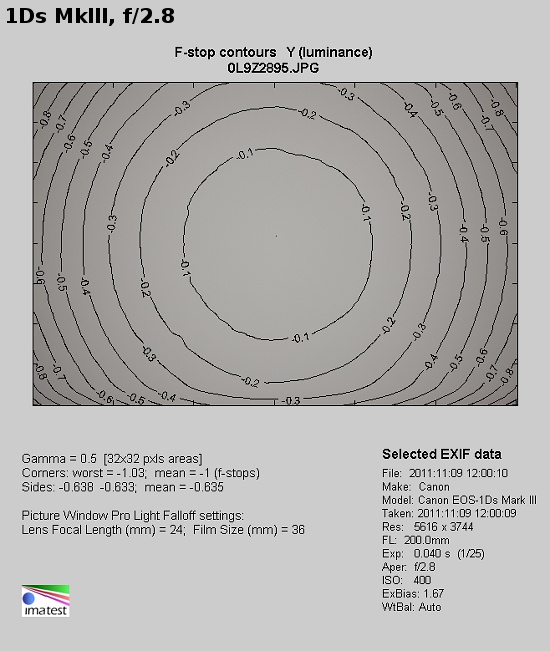Canon EF 200 mm f/2.8L II USM
8. Vignetting

At the maximum relative aperture the vignetting amounts to just 14% (-0.45 EV) and it doesn’t create any serious problems. It disappears completely already by f/4.0 where it reaches a negligible value of 4%.
Please Support UsIf you enjoy our reviews and articles, and you want us to continue our work please, support our website by donating through PayPal. The funds are going to be used for paying our editorial team, renting servers, and equipping our testing studio; only that way we will be able to continue providing you interesting content for free. |
- - - - - - - - - - - - - - - - - - - - - - - - - - - - - - - - - - - - - - - - - - - - - - - -
The issue is more pronounced on full frame but even there you shouldn’t worry.

At the maximum relative aperture the brightness loss in the frame corners gets to 29% (-1.00 EV). The vignetting becomes practically invisible already by f/4.0 where it is just 10% (-0.30 EV).
According to our expectations the results, presented here, are noticeably better than those of the new 70-200 mm f/2.8L IS USM II at the maximum focal length. In its case the light fall-off in the frame corners amounted to as much as 39% so a value definitely higher than that of the fixed focal lens, tested here.
 |






